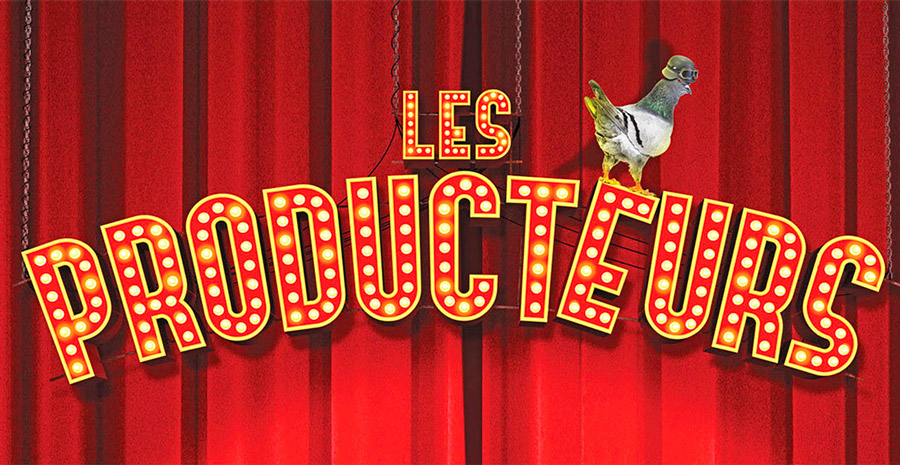We had the luck and the pleasure of spending a whole day at the Théâtre de Paris with the technical team of Mel Brooks’ musical “The Producers” (“Les Producteurs”, Fr.), directed by Alexis Michalik.
In addition to getting to see the show, which has been sold out for months, we were also able to take a look at the technical aspects of the show together with the two key figures of the sound team, sound designer Julius Tessarech and head of audio and mixing engineer Xavier Marchand.
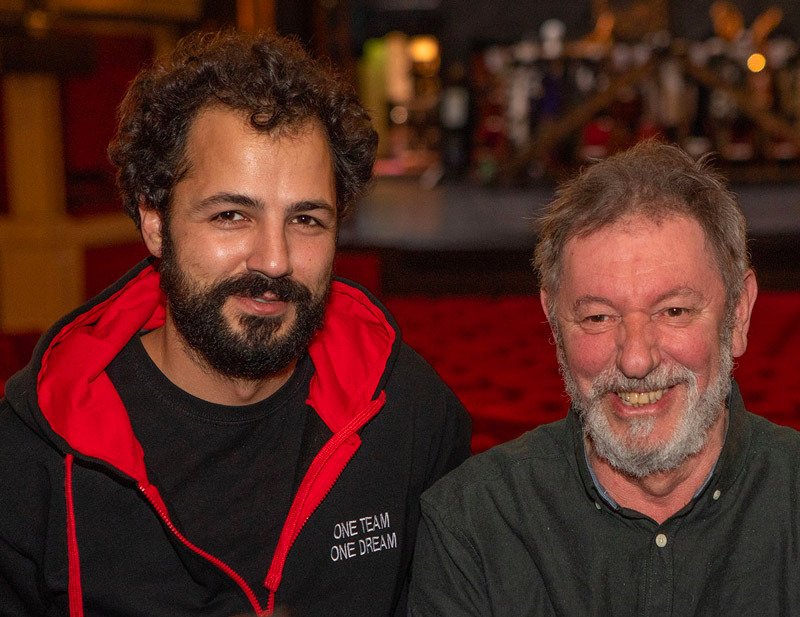
The questions and the detailed answers flowed and, from wiring to Harting, our desire to keep it all forced us to divide this cross-section of Musical Theater life into two parts. It was Xavier who welcomed us in the morning for a detailed tour of the production.
The Théâtre de Paris features a classic, horseshoe-shaped “teatro all’italiana” architecture, with ample seating in the orchestra section, as well as a mezzanine and a balcony, neither of which protrudes very much.
The four large opera boxes at the sides of the hall, the most lateral of which – known as the “bathtubs” at the bottom and the loges at the top – host the orchestra, which is divided into the same number of sections, with the drums/percussion, the three brass instruments, the two keyboards and the musical director, and the double bass. The percussion and brass being very loud, these are isolated from the hall by plexiglass panels.
The musicians play entirely live, and very well, every night, with the MainStage system adding some instruments, such as harp or marimba, to allow for full arrangements, despite the reduced number of musicians compared to the original version.
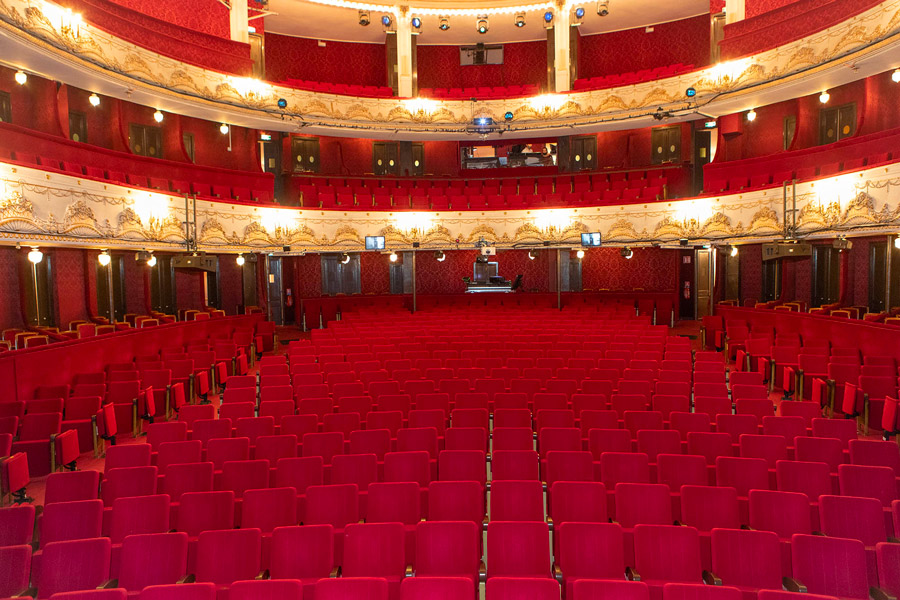
SLU : Can you tell us about the sound system?
Xavier Marchand : We have a mix between the venue’s resident gear and our supplements. We didn’t want anything coming from the sides of the stage, since we have the musicians very close. So we moved our first line of d&b V10Ps outward into the auditorium.
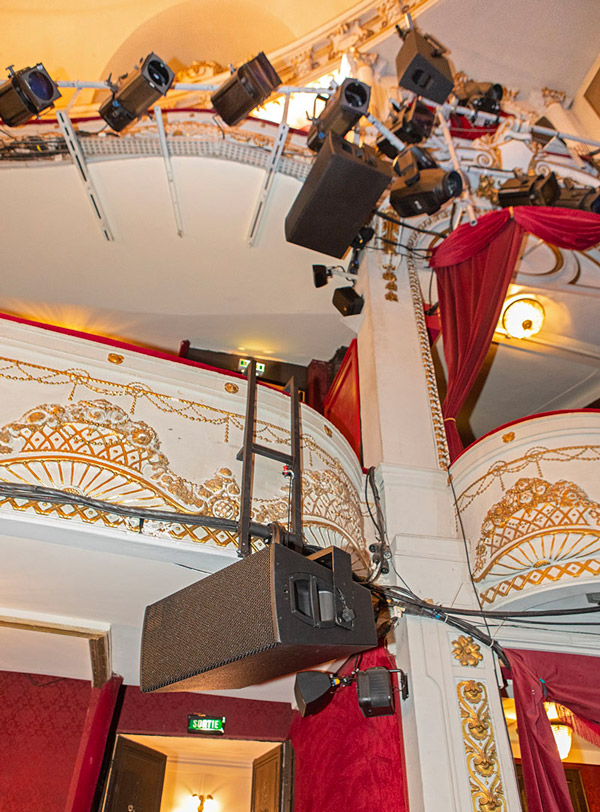
For the orchestra section of the parterre and for the delays, we have a pair of V7Ps. For the mezzanine and the balcony, we have a pair of V7Ps for each. All these speaker enclosures have custom-made mounts. Finally, we use the central resident T10 system, comprising four heads and a bass reinforcement at the top of the array.
To fill out the low end of the spectrum, we have two Q-SUBs hidden under the two stairways at the right and left sides of the stage, which are part of the theater’s resident sound system, in addition to two E15Xs that we added for the balcony.
Lastly, we deployed a large number of small E5s to fill in and brighten up the shadowed zones, like the loges, and a pair of E8s on the bottom of the stage as side fills. However, we kept the E5s hidden under the lip of the stage behind an acoustically transparent fabric, and these fill in the front rows.
SLU : And what about surround sound?
Xavier Marchand : Here, too, we supplemented the small JBLs in the room with E4 units, where necessary. It’s easier not to have to run a lot of cable and invent mounts when you can use existing speakers that work. We just connected our amps, which is easier, so we have two surround planes, one in front and one in back. We use voice effects, various other effects, and touches of reverb.
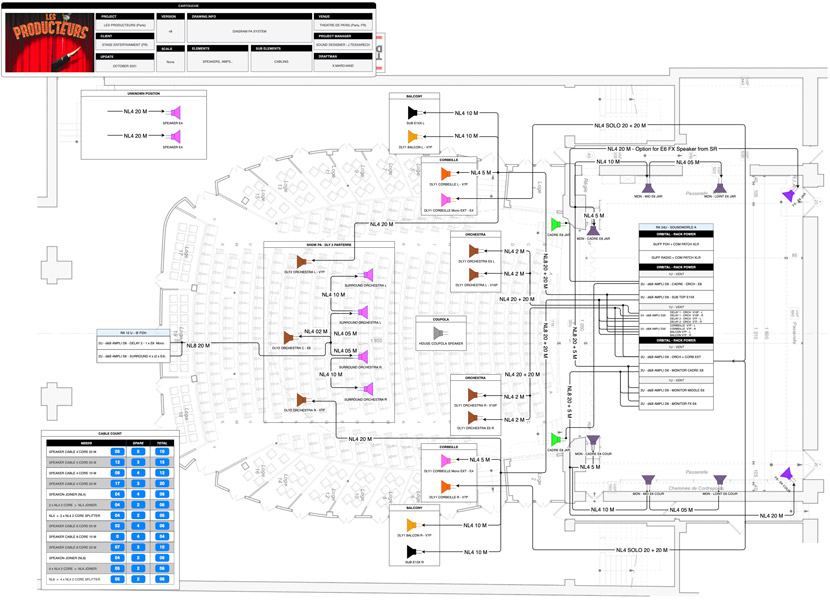
SLU : How is the show doing at the box office?
Xavier Marchand : Going strong. We are practically full every night.
SLU : This delay in front of the console is bigger than an E5; you’re spoiling yourself!
Xavier Marchand : (smiling) Yes, it’s an E6 that covers the back of the stall seats under the mezzanine, and it’s right in front of the console.
SLU : We were talking about supplements but, with a few exceptions, you have fully deployed your own system…
Xavier Marchand : This venue hosts shows for long periods of time, so there are layers of speaker enclosures and wiring from very different periods. We made the choice to occupy the place as if we were on tour, with our snakes and our custom cabling, including the intercom and video.
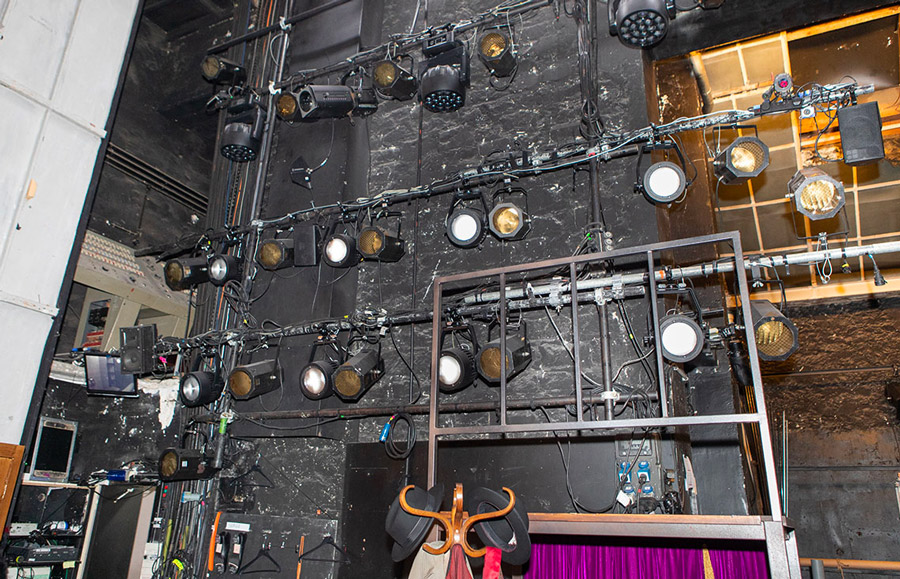
We leave the red velvet for a visit to the stage, with its RF antennas and monitors.
SLU : The monitors for the artists on stage are fed by the console at the front of house.
Xavier Marchand : Yes, it’s common in musicals, we’ll show you later how we leave the individual mix to the musicians. For the stage, where there are 16 players, we have a pair of E8s just behind the curtain and then two pairs of E6s at the sides going up-stage. There is also a last pair of E6s at the back of the stage, which we use for specific distant effects such as ringing telephones.
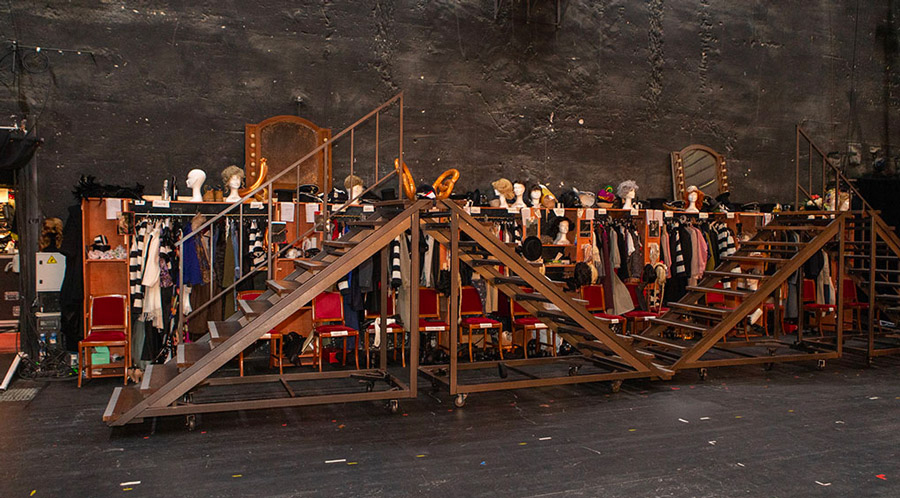
SLU : Is the monitor mix typical of a musical?
Xavier Marchand : Just as it ought to be, with very little voice and a lot of piano, which is the musical director’s instrument, to get the cues and the pitch. There is, of course, no click and the same goes for the musicians.
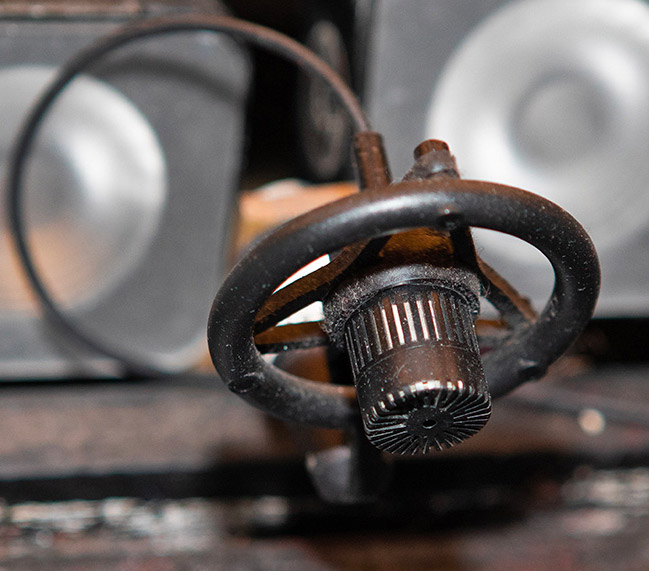
SLU : Are those four floor mics for the tap dancing? You have a great wooden floor, isn’t that enough?
Xavier Marchand : No, when they tap dance, it is loud and lacks a bit of presence. These are DPA 4022s. We kept their anti-shock suspension and we had some small mounting brackets made. To open up the sound a bit and give it some air, I also use the vocal mics of the dancing artists – plus the two leads have mics on their ankles. (he laughs).
We leave the stage and enter the first lower box, the one occupied by the musical director and keyboards, as well as a second musician responsible for the MainStage system – which is composed of two complete setups as backup – and, finally, the accordion. All the musicians work with wired ear monitors.
SLU : How are the mixes personalized?
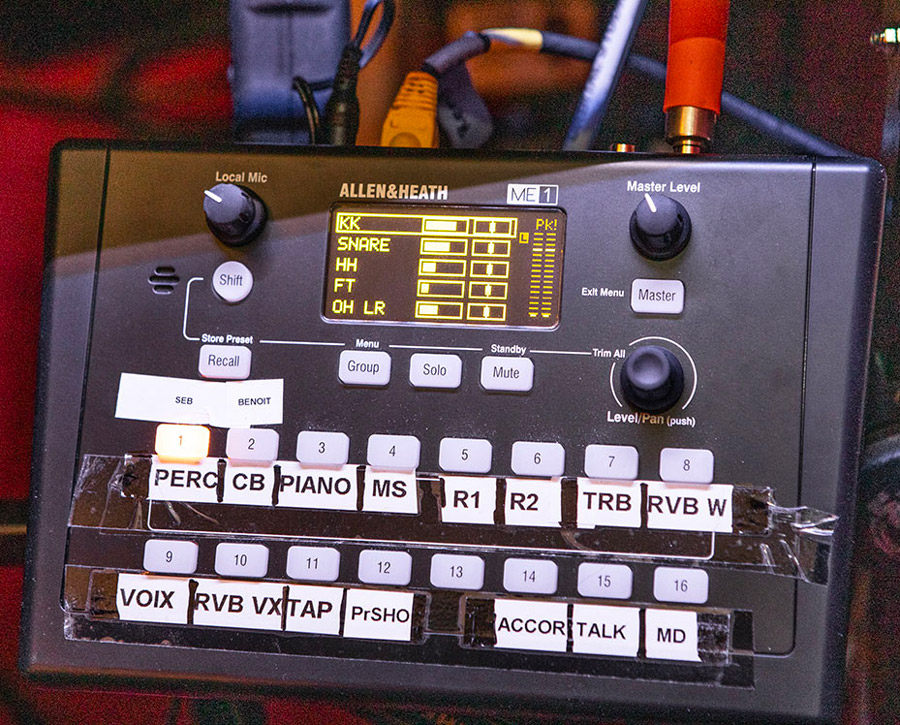
Xavier Marchand : With an Allen & Heath ME system. We send 40 signals, whether direct outs, groups or matrices, and each musician can do what he wants with each track on his ME-1 unit.
The voice signals are slightly compressed and post-fader. On the other hand, I made sure to split the tracks where the processing could bother them, in particular the gates. The same goes for the brass, where we let them have the full spectrum, including the frequencies that would be troublesome for us in the room.
They are free to choose between the three microphones at their disposal – the over-head, the TLM and the ribbon. They can choose which one, or the sum of which ones, to listen to.
SLU : Did the musicians each create their own mix?
Xavier Marchand : No, we programmed a basic mix into each ME-1 for each musician, where their instrument is at 0 dB and the rest between -3 and -6 dB. After that, they took charge of the system and the levels, then they created their own presets to facilitate the rotation between the musicians.
Finally, we have some files on a USB key that allow them to touch up the presets with peace of mind, including the “Trim All” function that allows them to lower all the groups and avoid saturating the summing amplifier. The implementation of the ME has been a success in this musical. The musicians are thrilled and so are we.
A door in the back at stage-right opens into a space that is the passageway for the performers and has been transformed into a wireless control booth. It is here that Pierre Cottin, who is the RF operator and alternate FoH mixing engineer, as well as Alex Point and Bastien Michalski take turns working.
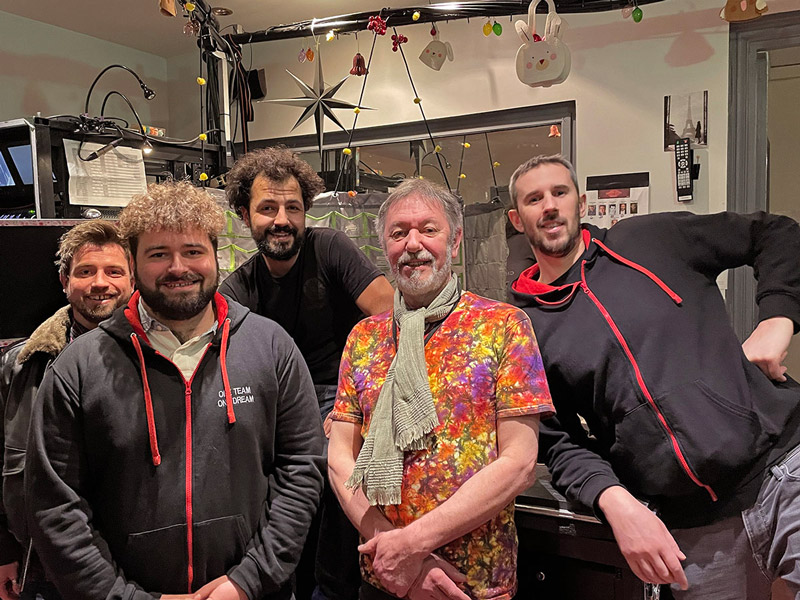
An enormous vertical rack houses the antenna splitter, the seven Shure AD4Q receivers and the Axient spectrum manager, all on a UPS. As you can see, Xavier and Julius have chosen Shure for their digital links, and take advantage of the Dante output of the receivers to keep the signal chain in digital.
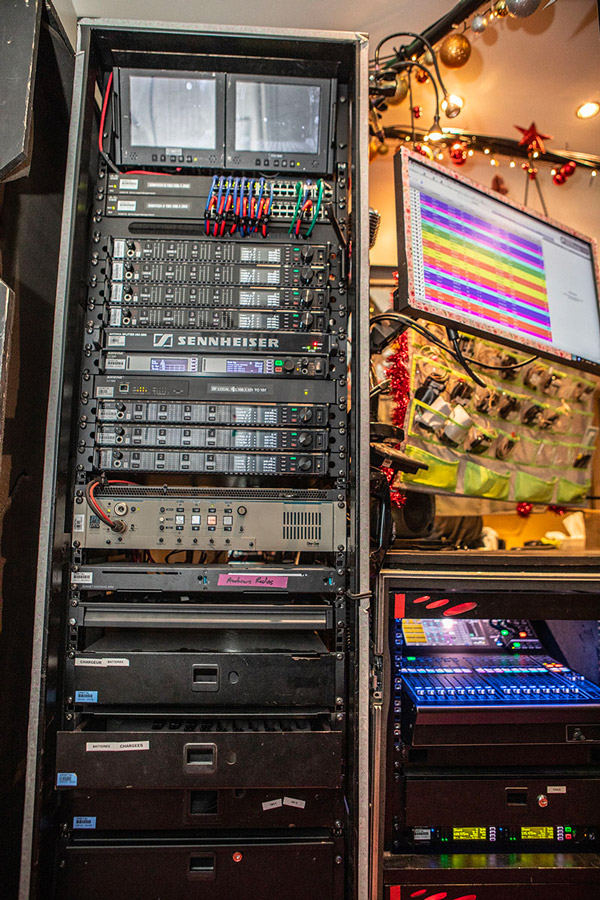
This makes 28 links in total, which can be accounted for by six redundant systems – via two bodypacks – for the six main characters, with two separate mics and an A/B on the console, but also for the pre-show where the musicians greet the audience while playing on stage, and finally for the two handheld mics, which are always useful during rehearsals. One of these handheld mics is used in the upright piano during the pre-show!
SLU : So there are so many receivers for redundancy?
Xavier Marchand : That’s right, the six main roles are assigned two mics in a homemade assembly, and two transmitter packs. I also made sure that the six main roles were distributed on different AD4Qs in case one of the quad receivers were to fail.
The wireless is handled by Pierre Cottin, who frequently works here at the Théâtre de Paris and was highly recommended to us by Patrick Bergeron, who manages the audio at Mogador. Pierre is great and, on top of that, he replaces me once or twice a week at FoH, and could do it permanently if one day I were to leave.
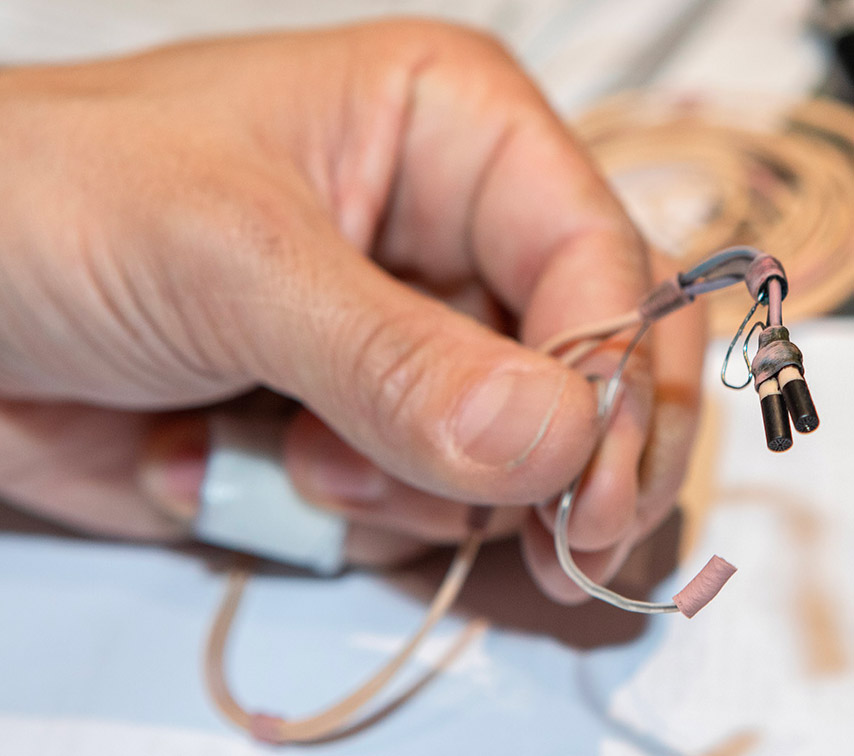
SLU : There is a lot of know-how here…
Xavier Marchand : We constructed all of our mic systems starting with DPA 6060s, except for a 6061 for a character that has a lot of dynamics and also fires gunshots. This know-how is written down in our “bible”, where for each actor/singer everything is written and illustrated.
It goes from the position of the microphone and how to run the wires, to allergies and sweat management. It’s also useful for training. Our twin-mic ear mounts are custom-made using piano wire, cable jackets and heat-shrink tubing. They memorize the shape of the ear and can be easily tightened for the show.
SLU : How do the 6060 capsules hold up over time?
Xavier Marchand : They are very durable and more resistant than the 4060. We verify every day at the mic check that the sound is good and the A/B setting. We ended up choreographing a glass of water that a character gets thrown in his face every night after losing a few transducers, which were fortunately replaced on the fly, and the amount of water has been reduced. (laughing).
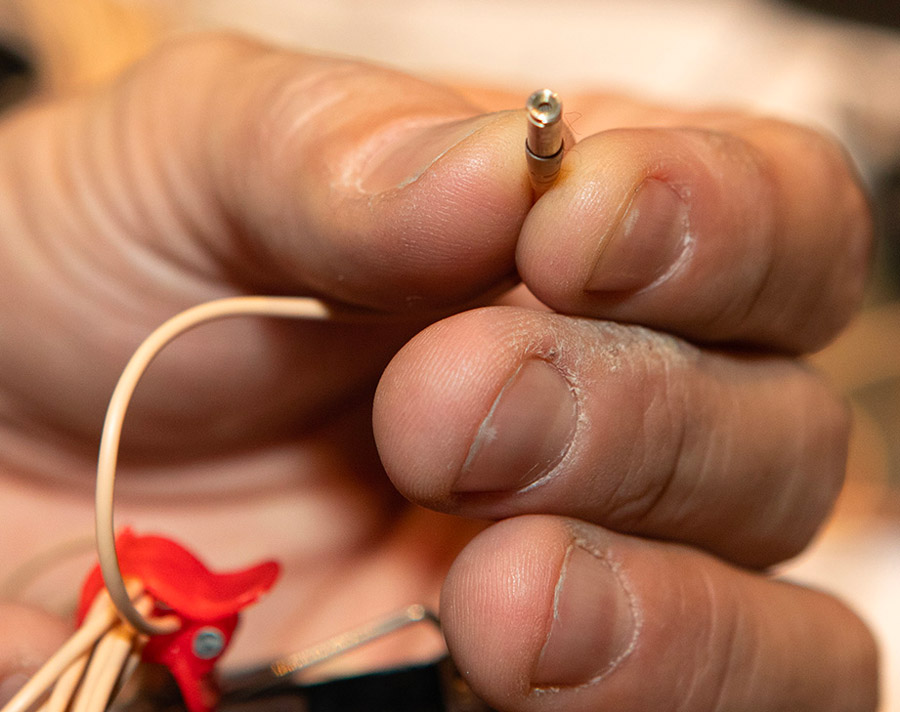
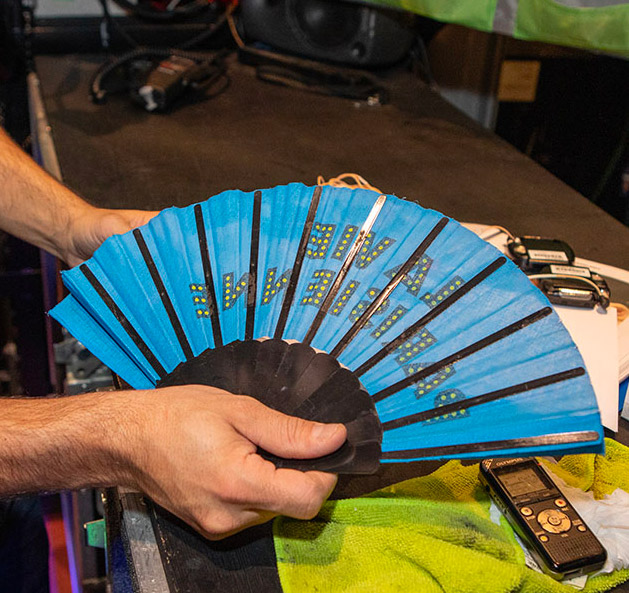
SLU : By the way, who makes these home-made ear-hooks?
Xavier Marchand : I do, with the help of the other RF techs. We started as soon as the rehearsals started. I have a kit with all the pliers, shears and accessories to work with the stainless steel piano wire, the same that is used by fishermen. It takes a long time to make because we also create spare ones, but it’s solid and we get an essential accessory made to measure.
SLU : Why the choice of the ear-hook and not the forehead or the headset?
Xavier Marchand : This is due to the large number of hats used in the show and Julius’ desire to not see any microphones at all. The women are wearing them under their wigs.
SLU : How do they wear the bodypacks with the frequent costume changes?
Xavier Marchand : In Viviana straps, where we also sew a second pouch for the secondary transmitter (ed note: a Double Pouch version has now been made available). The packs are inserted upside down, courtesy of an angled plug soldered by Orbital, our English rental company, onto bare wires. This assembly protects the wire and is more durable over time.
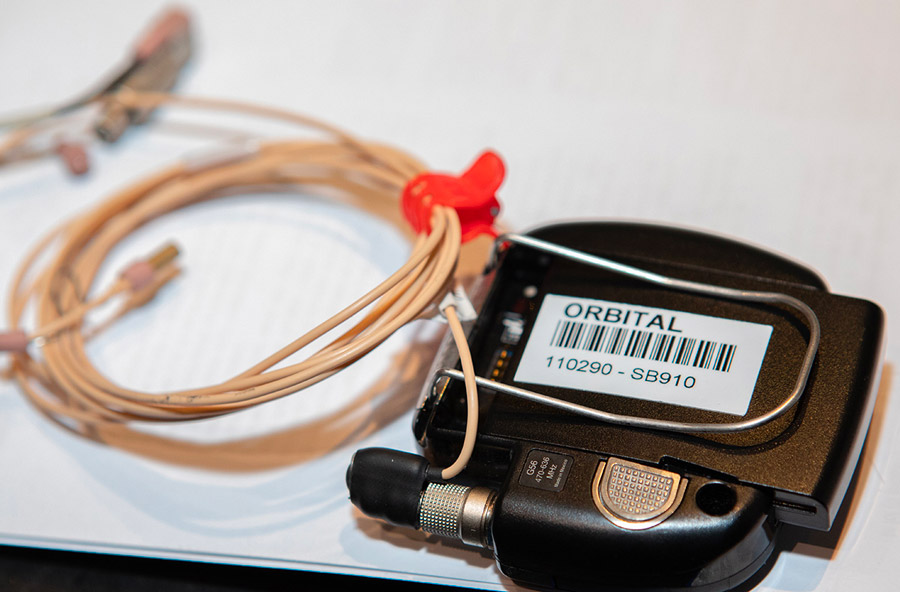
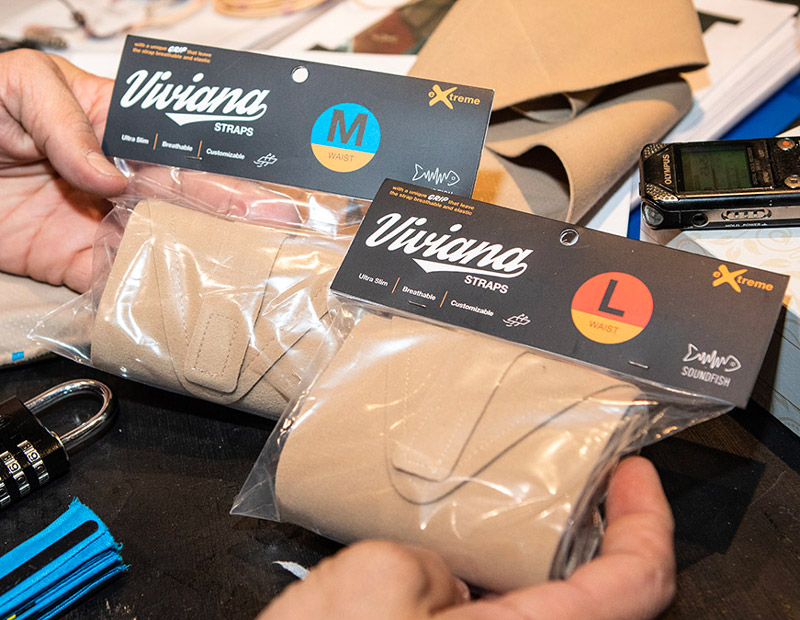
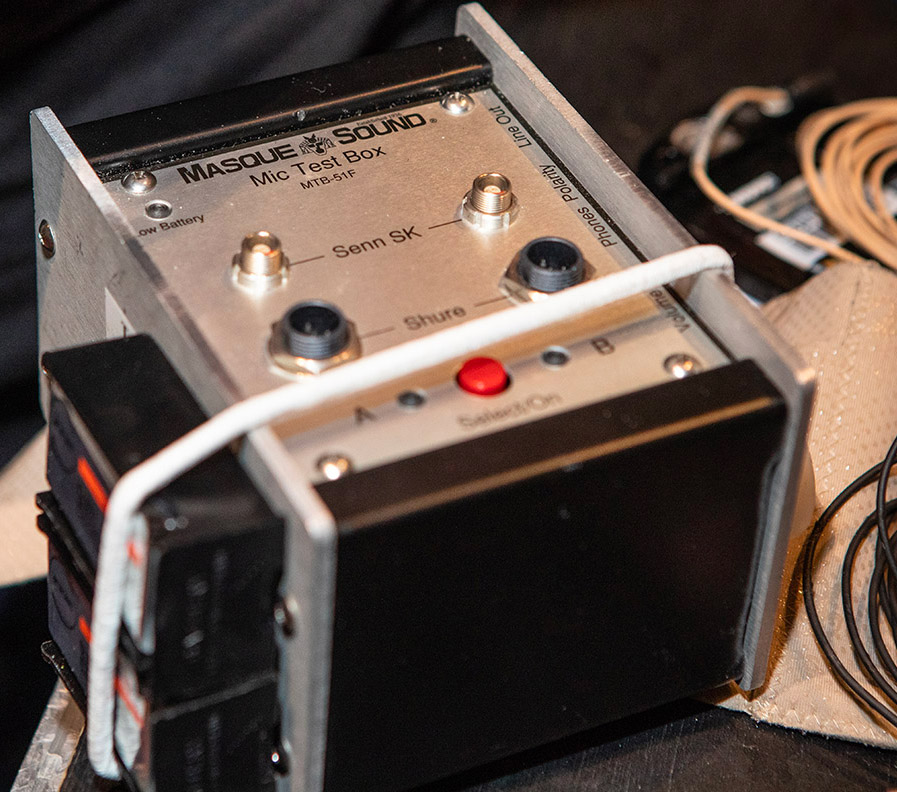
SLU : And in case of a faulty contact…
Xavier Marchand : We fix it. I solder on the LEMO. You need the right soldering iron with an ultra-fine tip and a little bit of practice. No matter how much we put elbows and flexible sleeves on all the delicate places, it can happen that the wire gets broken invisibly.
And then you need a box to test the microphones and their cables. I bought my own, a real investment but essential.
SLU : What about the tap dancing?
Xavier Marchand : We use some old Sennheiser MKE 1 mics that have been around the block a few times. The fact that Stage is a co-producer gives us the possibility to recover some elements like these microphones which are very well adapted to this purpose.
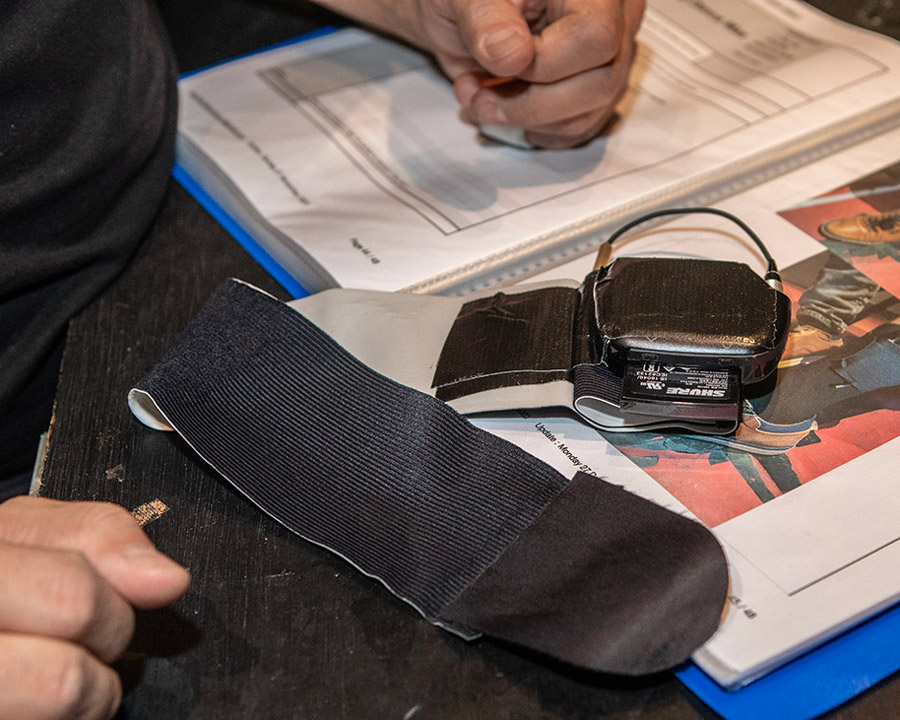
Both the transmitter and the microphone are attached to the ankles of the performers using elastic medical bands. The sound we get from them completes and clarifies what the four microphones on the stage are picking up and allows us to distinguish the two main roles that are equipped with them from the rest of the dancers.
SLU : The make-up is done by specialists?
Xavier Marchand : No, the performers do it, that’s why we equip them with the mics and, for the most part, with the belts and bodypacks in the front, so they can handle the wires and the tape themselves. We have cleansing wipes that prepare their skin and make it more adherent.
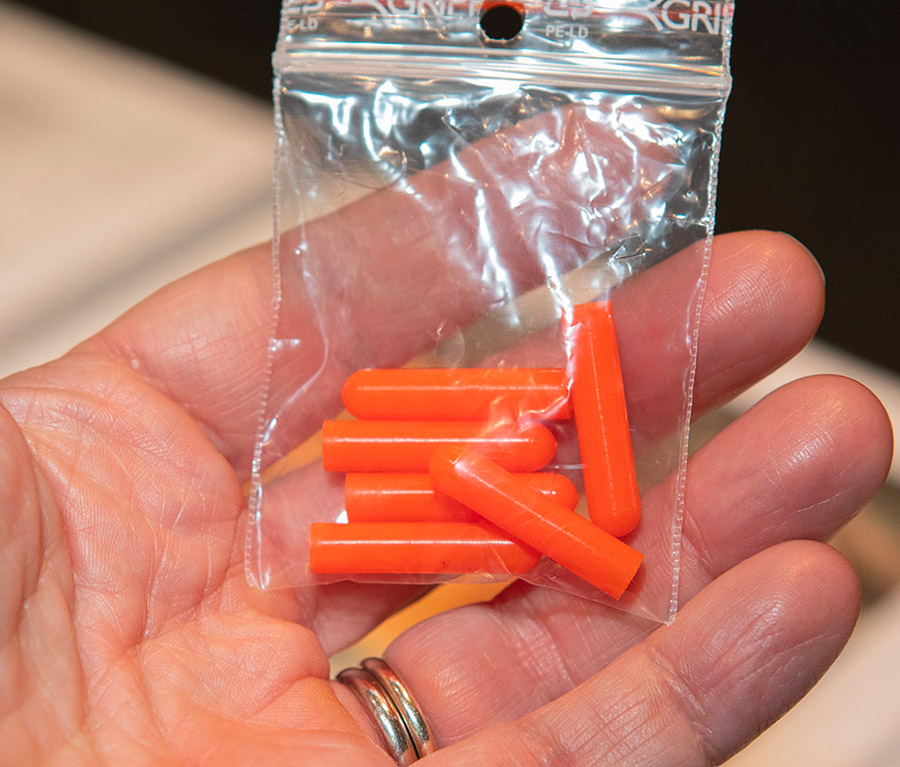
To prevent makeup from clogging or depositing on the membrane, the capsule is covered with a cap that slips over it and is large and colorful enough so that you don’t forget to remove it before going on stage. It’s kind of like a “Remove Before Flight…or Song” tag.
SLU : If Pierre Cottin moves to FoH, you need more people for wireless!
Xavier Marchand : That’s already done. There are three of them, but this also applies to the front of house. This type of show is too demanding on the mixing engineer for him to be replaced on the fly.
The lighting operator can more easily leave his place or even a musician, even if ours have worked to be able to be replaced more easily. Running the sound console is more delicate and demanding. The FoH engineer has to learn the show and the way to run it.
We do some rehearsals with the musicians and some virtuals for him so that he can memorize the choreography of the faders and the sequences. It takes two to four weeks to learn the show. I filmed the console from overhead to illustrate the movements.
SLU : Could you give us some quantification of the work at front of house during a two-hour show?
Xavier Marchand : We have about 280 scenes, and on the 140 pages of the cue sheet, roughly 10 to 15 lines, we have a total of around 1,400 cues or actions. So I have organized the Yamaha PM5 with the voice DCAs in the center, the individual voices on the left and the orchestra DCAs on the right. The FoH engineer is standing up and his eleventh finger is his foot on a pedal to change to the next scene.
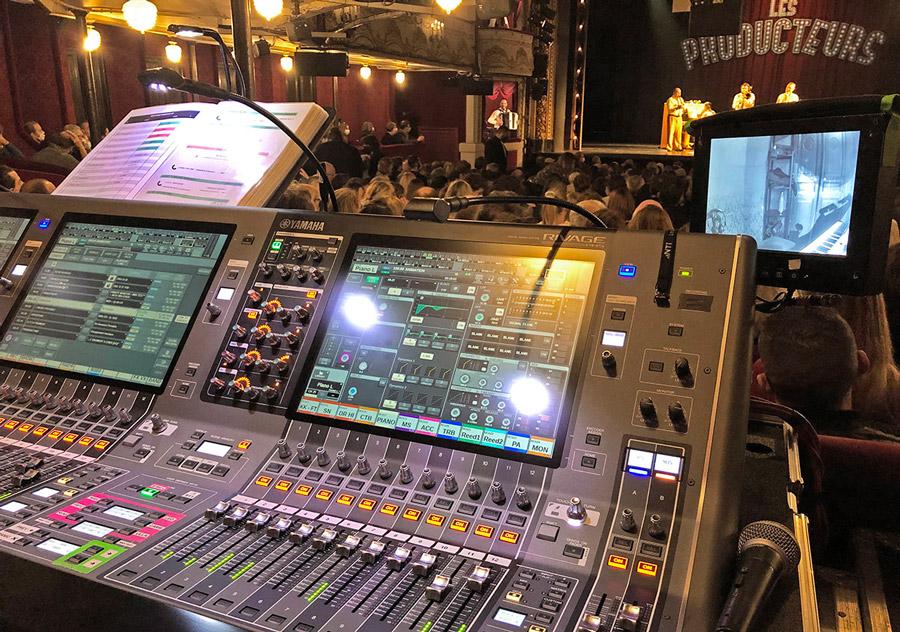
SLU : You are not allowed to leave the channel open when the performer leaves the stage…
Xavier Marchand : Never; it’s a continuous tracking process, unless the director asks that we hear the character’s voice from off-stage before he enters or after he exits. Behind the curtain or the set there is no more sound. This also gives us time to blow or dry a microphone without noise in the room.
We also make sure to be very discreet by never listening to the channels for no reason, except for maybe a few seconds during a check. Having a microphone on you does not mean that you are being bugged or recorded without your knowledge. We were very clear about this from the start so that everyone would feel comfortable.
SLU : You are amplifying the voices indoors in a single system. Is there much coloration from phasing between the mics?
Xavier Marchand : No, but it does mean we have to do a lot of tweaking during the dialogue when the characters get close to each other.
A few hearty claps in the silence of the room reveal its personality. The early reflections are present and dense. The RT is less than a second, quite clear. We can clearly hear the passage from the early reflections to the late reverberation. It sounds like an effect made in studio with two processors…
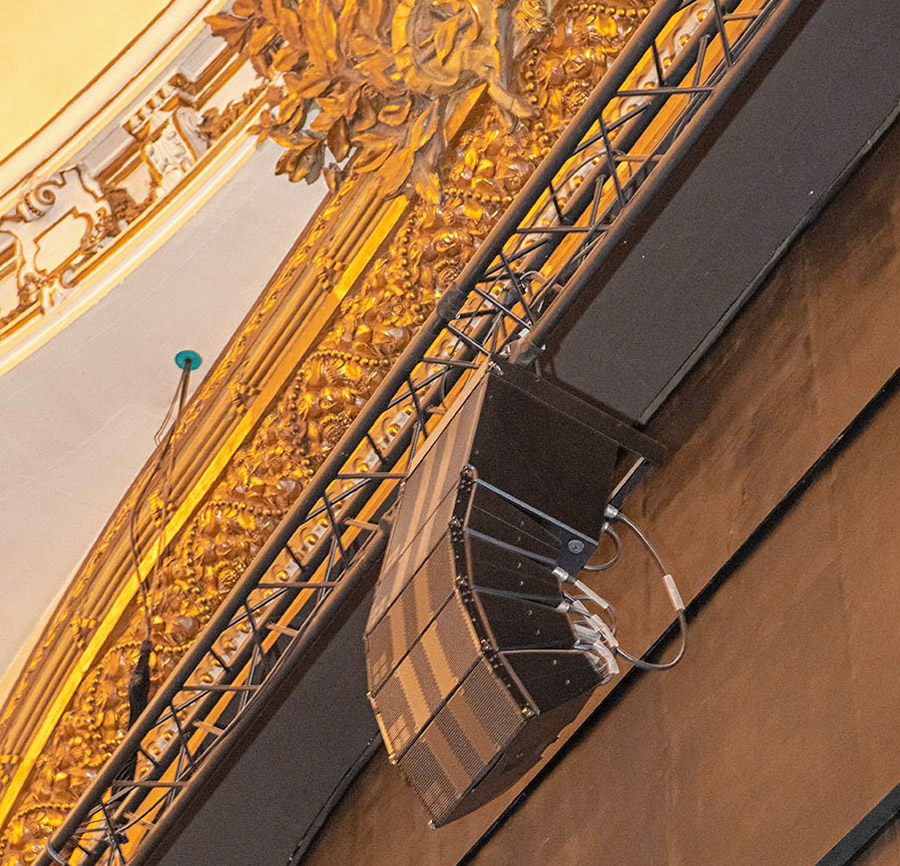
Xavier Marchand : The advantage of these acoustics and the velvet is that, whether the room is full or empty, it doesn’t change much. If the balcony is empty, there is no need to mute the speakers. I find this room pleasant to work in, except for the dome, which brings its classic “Garnier” effect, very perceptible when you are under it (ed. note: or even more so when you are in the Grand Palais).
Speaking of the dome, there is a rather old EAW enclosure up there, but it works. We connected it to one of our amps with a preset of E8 to protect it and we use it for some effects.
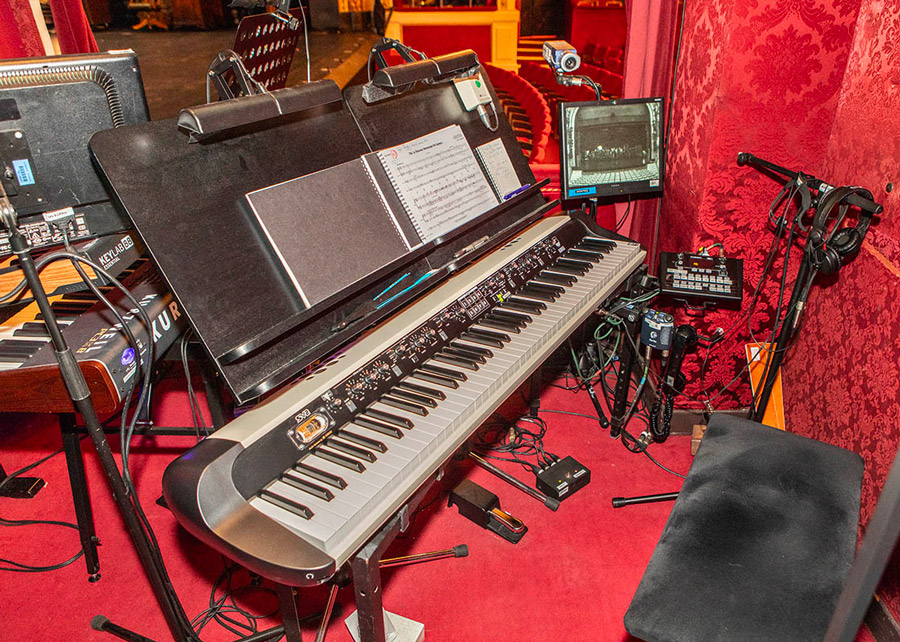
SLU : Where is the show caller positioned?
Xavier Marchand : At the top of the mezzanine, just above the audio FoH, in the control room of the theater. There is where the media is sent from to the two video projectors in front and behind that are used during the show, and also where the lights are controlled.
We are connected by intercom but we don’t have any automations or time code between the two worlds. If there is a stop, of course we follow it and we talk on the “telephone” but otherwise we are very independent.
SLU : How long did it take to install the production in the theater and to set up this musical?
Xavier Marchand : About a month, altogether. We came in on November 3, 2021, and on the 5th we started to rehearse with the system. It took us two long days to put everything together, with five people. Around the 6th we started to tweak it and on the 10th the orchestra arrived. We then followed the rehearsals and the adjustments until the 27th, when we did our dress rehearsal.
That’s all folks! After a few days to catch our breath, we’ll dive back into “Les Producteurs”, part 2, with Orbital, the English supplier of all the audio, intercom and video technology, Xavier and his years spent in the Circus, Julius Tessarech, the sound designer of this musical and, finally, our listening impressions.



